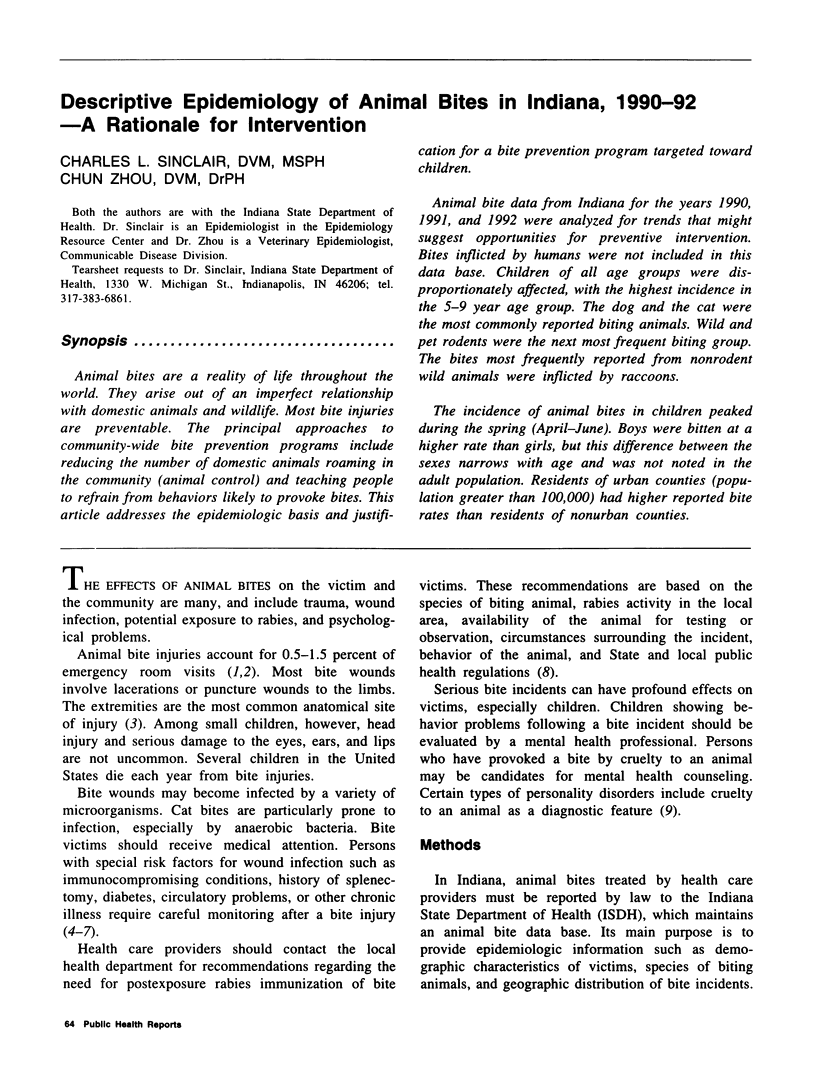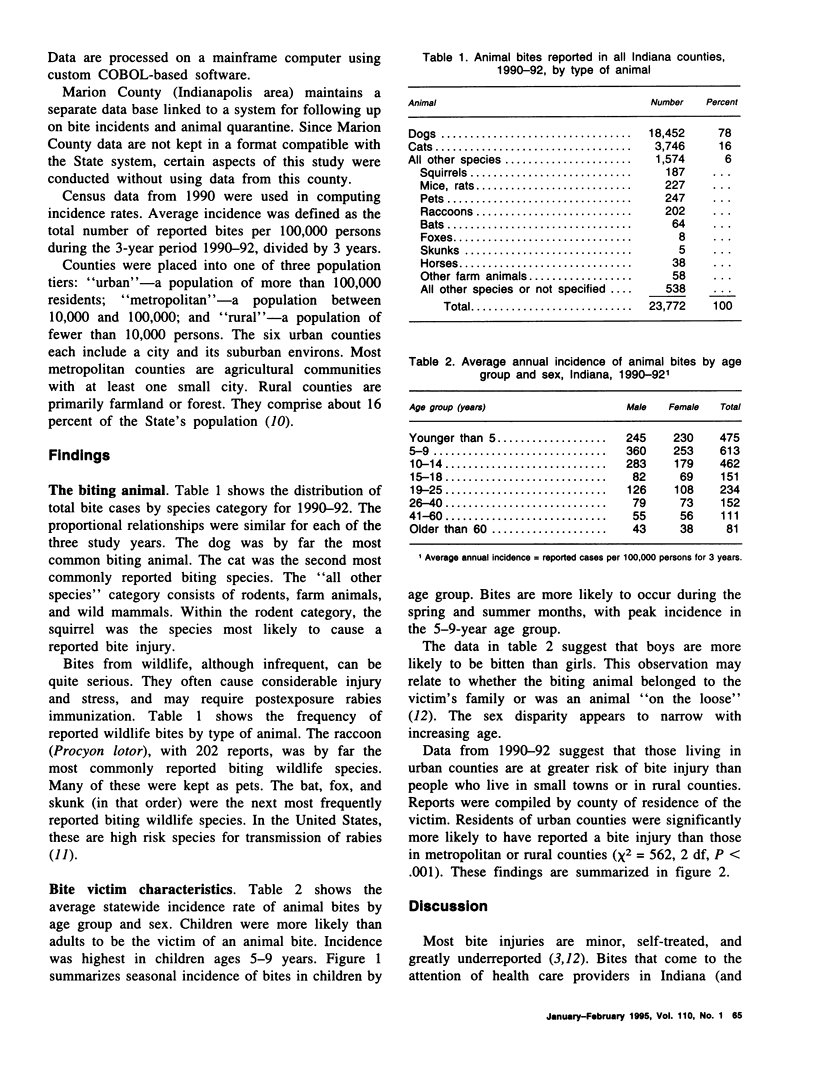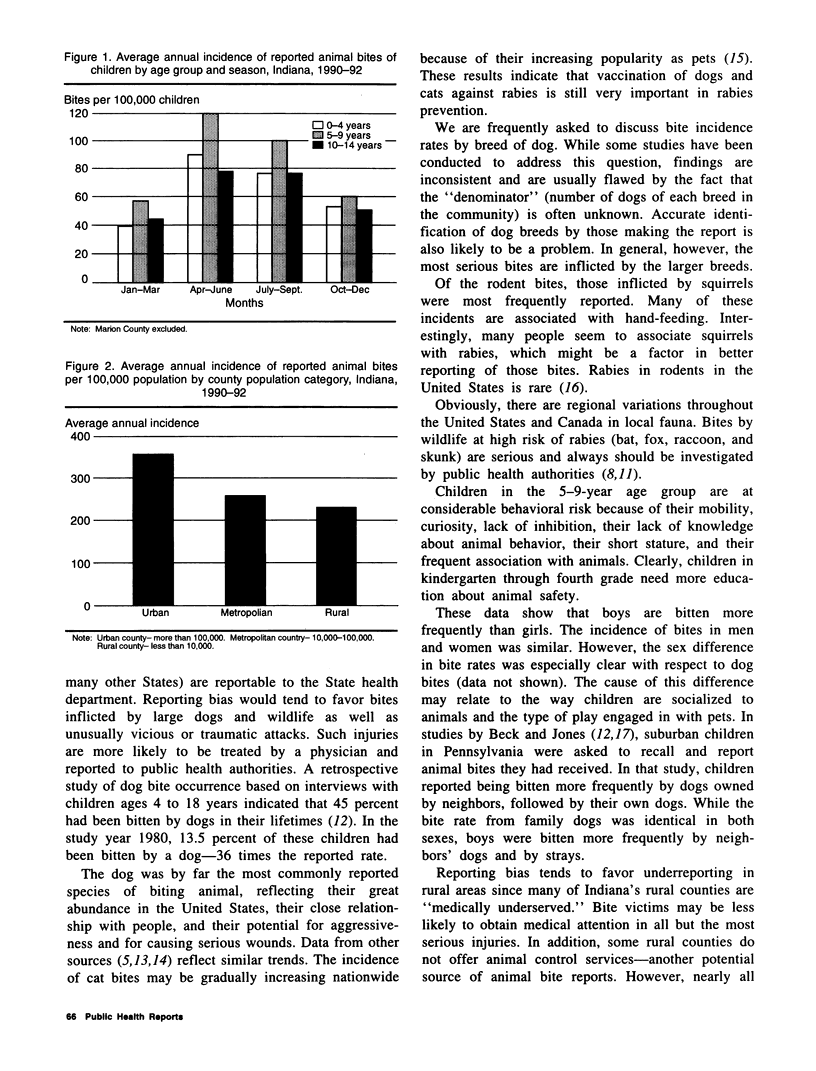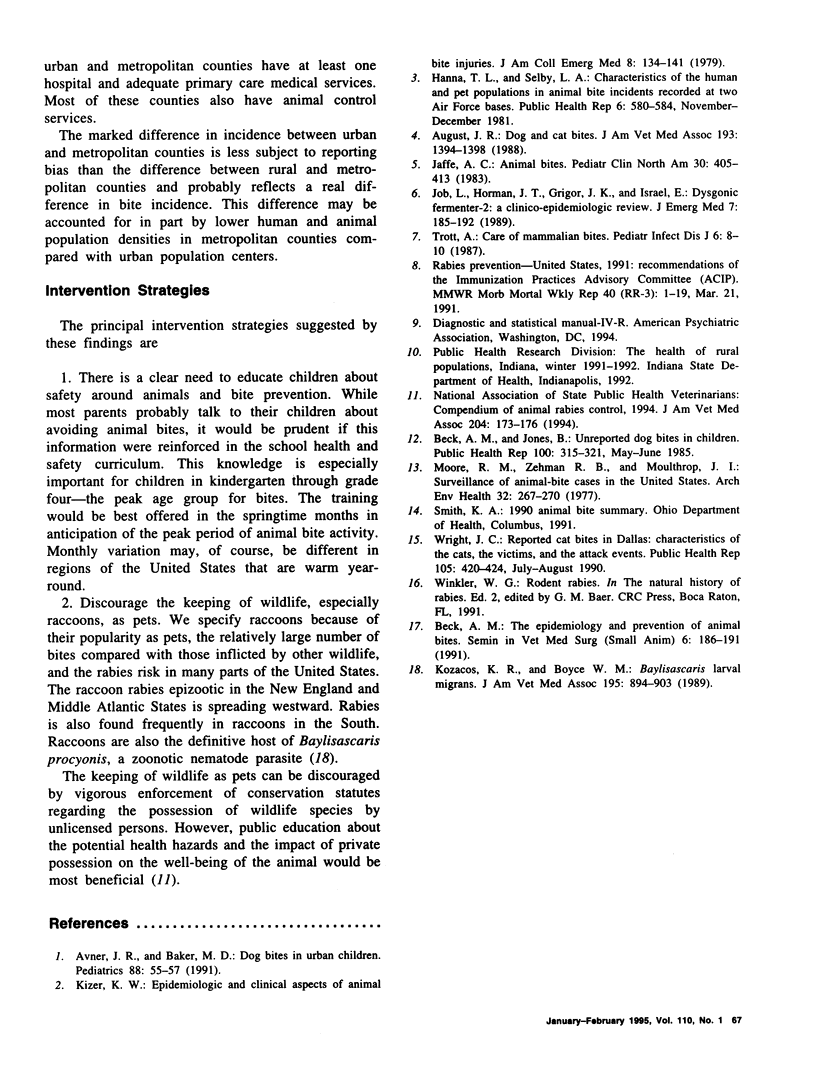Abstract
Animal bites are a reality of life throughout the world. They arise out of an imperfect relationship with domestic animals and wildlife. Most bite injuries are preventable. The principal approaches to community-wide bite prevention programs include reducing the number of domestic animals roaming in the community (animal control) and teaching people to refrain from behaviors likely to provoke bites. This article addresses the epidemiologic basis and justification for a bite prevention program targeted toward children. Animal bite data from Indiana for the years 1990, 1991, and 1992 were analyzed for trends that might suggest opportunities for preventive intervention. Bites inflicted by humans were not included in this data base. Children of all age groups were disproportionately affected, with the highest incidence in the 5-9 year age group. The dog and the cat were the most commonly reported biting animals. Wild and pet rodents were the next most frequent biting group. The bites most frequently reported from nonrodent wild animals were inflicted by raccoons. The incidence of animal bites in children peaked during the spring (April-June). Boys were bitten at a higher rate than girls, but this difference between the sexes narrows with age and was not noted in the adult population. Residents of urban counties (population greater than 100,000) had higher reported bite rates than residents of nonurban counties.
Full text
PDF



Selected References
These references are in PubMed. This may not be the complete list of references from this article.
- August J. R. Dog and cat bites. J Am Vet Med Assoc. 1988 Dec 1;193(11):1394–1398. [PubMed] [Google Scholar]
- Avner J. R., Baker M. D. Dog bites in urban children. Pediatrics. 1991 Jul;88(1):55–57. [PubMed] [Google Scholar]
- Beck A. M., Jones B. A. Unreported dog bites in children. Public Health Rep. 1985 May-Jun;100(3):315–321. [PMC free article] [PubMed] [Google Scholar]
- Beck A. M., Jones B. A. Unreported dog bites in children. Public Health Rep. 1985 May-Jun;100(3):315–321. [PMC free article] [PubMed] [Google Scholar]
- Beck A. M. The epidemiology and prevention of animal bites. Semin Vet Med Surg (Small Anim) 1991 Aug;6(3):186–191. [PubMed] [Google Scholar]
- Jaffe A. C. Animal bites. Pediatr Clin North Am. 1983 Apr;30(2):405–413. doi: 10.1016/s0031-3955(16)34367-x. [DOI] [PubMed] [Google Scholar]
- Job L., Horman J. T., Grigor J. K., Israel E. Dysgonic fermenter-2: a clinico-epidemiologic review. J Emerg Med. 1989 Mar-Apr;7(2):185–192. doi: 10.1016/0736-4679(89)90268-0. [DOI] [PubMed] [Google Scholar]
- Kazacos K. R., Boyce W. M. Baylisascaris larva migrans. J Am Vet Med Assoc. 1989 Oct 1;195(7):894–903. [PubMed] [Google Scholar]
- Kizer K. W. Epidemiologic and clinical aspects of animal bite injuries. JACEP. 1979 Apr;8(4):134–141. doi: 10.1016/s0361-1124(79)80339-1. [DOI] [PubMed] [Google Scholar]
- Moore R. M., Jr, Zehmer R. B., Moulthrop J. I., Parker R. L. Surveillance of animal-bite cases in the United States, 1971-1972. Arch Environ Health. 1977 Nov-Dec;32(6):267–270. doi: 10.1080/00039896.1977.10667293. [DOI] [PubMed] [Google Scholar]
- Trott A. Care of mammalian bites. Pediatr Infect Dis J. 1987 Jan;6(1):8–10. doi: 10.1097/00006454-198701000-00004. [DOI] [PubMed] [Google Scholar]
- Wright J. C. Reported cat bites in Dallas: characteristics of the cats, the victims, and the attack events. Public Health Rep. 1990 Jul-Aug;105(4):420–424. [PMC free article] [PubMed] [Google Scholar]
- Wright J. C. Reported cat bites in Dallas: characteristics of the cats, the victims, and the attack events. Public Health Rep. 1990 Jul-Aug;105(4):420–424. [PMC free article] [PubMed] [Google Scholar]


